Product Showcase
Product Showcase
Mercury analyzer
The Model RA-4500 mercury analyzer from Nippon Instruments is designed for automated sample digestion and analysis of mercury in wastewater, drinking water, and other aqueous samples. According to the company, the analyzer includes features such as NIST-traceable temperature logging, a color sensor for potassium permanganate verification, and a built-in exhaust system. Nippon Instruments North America, College Station, TX;
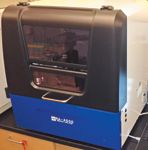
Raman spectrometers
Raman spectrometers from StellarNet are configured for applications to identify a variety of liquid, solid, or powder samples. According to the company, its Raman-SR and Raman-HR spectrometers achieve 8 cm-1 and 4 cm-1 resolution, respectively, using CCD detector arraystnrtedly have no moving parts. StellarNet Inc., Tampa, FL;
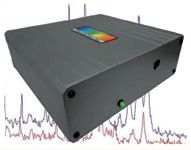
Microwave digestion
Milestone's UltraWAVE microwave digestion system uses the company's single reaction chamber technology for use in metals digestions. According to the company, the system uses a single pressurized vessel for all samples, allowing for simultaneous digestion of up to 22 samples. The system reportedly can accommodate a maximum temperature of 300 °C and pressure of 199 bar.Milestone, Inc., Shelton, CT;
www.milestonesci.com/ultrawave
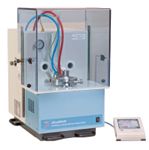
Miniature ion-trap mass spectrometers
1st Detect's miniature ion-trap mass spectrometers and components with MS-MS capability are designed to provide a mass range of 35–450 amu. According to the company, the MMS-1000 mass spectrometer is a benchtop system and the OEM-1000 system can be integrated into a variety of customer-specific platforms. 1st Detect Corp., Houston, TX;
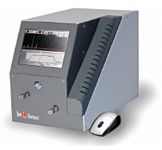
EMCCD spectroscopy detector
The Andor Newton EMCCD spectroscopy detector is designed with low noise electronics, cooling to -100 °C, up to 95% peak quantum efficiency, multi-MHz readout, USB 2.0 connectivity, and versatile readout modes. According to the company, the detector uses its electron multiplying CCD platform with optimized sensor formats for ultralow light level spectroscopy applications. Andor Technology, South Windsor, CT;
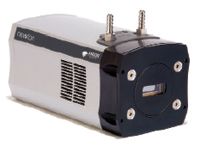
Spectrometer
The Exemplar Plus "smart" spectrometer from B&W Tek is designed with a low stray light unfolded Czerny-Turner spectrograph, on-board data processing, and USB 3.0 communication. According to the company, the instrument has spectral configurations from 190 nm to 1100 nm and resolutions between 0.1 nm and 10.0 nm. B&W Tek, Newark, DE;
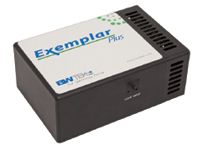
Raman microscope
The Nomadic dispersive confocal Raman microscope from BaySpec is designed with three laser excitation sources at wavelengths ranging from visible to NIR (532, 785, and 1064 nm or custom). According to the company, the system includes dedicated spectrographs and detectors for each excitation wavelength. BaySpec, San Jose, CA;
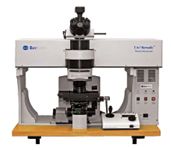
Chemical imaging system
The SIGNIS 2 chemical imaging system from Bruker Optics is designed to automatically identify airborne chemical compounds at distances up to 10 km. According to the company, the system's measurement head has automated 360° rotation. The system reportedly also can measure and record real time video images. Bruker Optics, Billerica, MA;
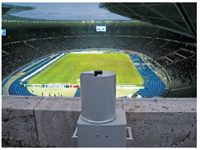
Modular Raman spectrometer
The Apex 785 Raman spectrometer from Ocean Optics is designed as a modular, small-footprint system. According to the company, the instrument uses a high-throughput virtual slit licensed from Tornado Spectral Systems and is suitable for low-light applications. Ocean Optics, Dunedin, FL;
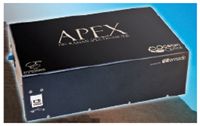
Multireflection ATR accessory
The JetStream ATR accessory from PIKE Technologies, is designed for the analysis of liquids in static or dynamic modes under ambient or variable pressure conditions. According to the company, the accessory comprises a cylindrical ATR crystal encased in a heavy-duty stainless steel body. PIKE Technologies, Madison, WI;
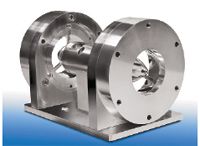
Cryogenic grinding mill
Retsch's CryoMill cryogenic grinding mill is designed for size reduction of sample materials that cannot be processed at room temperature. According to the company, an integrated cooling system ensures that the mill's grinding jar is continually cooled with liquid nitrogen before and during the grinding process. Retsch, Newtown, PA;
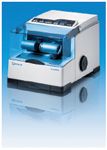
Inorganic certified reference materials
SPEX CertiPrep's Inorganic certified reference materials are available for ICP, ICP–MS, IC, AA, and XRF analysis for a range of analytical applications. According to the company, products include certified pH buffers, USP 232 standards, and 1-ppm ICP–MS single element standards. SPEX CertiPrep, Metuchen, NJ;

FT–IR spectrometer
The Nicolet iS50 FT-IR spectrometer from Thermo Scientific is designed as a research-grade system with one-touch operation. According to the company, the system can be upgraded to an automated multispectral range system that can acquire spectra from wavelengths ranging from far infrared to visible. Thermo Fisher Scientific, San Jose, CA;
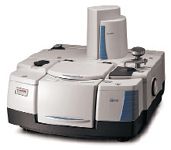
WDXRF spectrometer
The Supermini200 wavelength dispersive X-ray fluorescence spectrometer from Rigaku is designed for elemental analysis. According to the company, no chemical preparation step is required, and the spectrometer has light element sensitivity and low limits of detection. Rigaku Corporation, Tokyo, Japan;
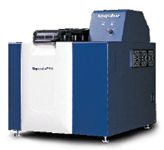
CMOS camera
The Nocturn digital CMOS camera from Photonis is designed for both daylight and low-light-level conditions. According to the company, the camera is suitable for applications for which high-resolution detection and ultra-high sensitivity are required and provides spectral responses from 400 nm to 1100 nm (near IR). Photonis USA, Sturbridge, MA;
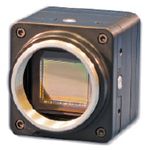
X-ray source
The 50 kV Ultralite monoblock X-ray source from Moxtek is designed for use with a variety of applications including handheld, portable, and benchtop instrumentation. According to the company, the device provides a high and stable X-ray output, a short sampling time, and a submillimeter spot size. Moxtek, Orem, UT;
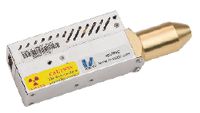
Microwave digestion
CEM's Discover SP-D pressurized microwave digestion system is designed to perform acid digestion for trace metals analysis in 10 min. According to the company, the system's individual sample programming allows samples with different parameters, methodologies, and vial types to be run in any sequence. CEM, Matthews, NC;
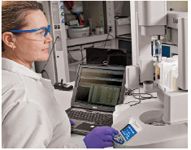
DPSS laser
The Cobolt Zouk continuous-wave, single-frequency DPSS laser is available with 10 or 20 mW output power. According to the company, a laser cavity design provides noise performance of typically <0.2% rms (over 20 Hz to 20 MHz and 10–40 °C), a spectral linewidth of <1 MHz, and immunity to optical feedback. Cobolt AB, Sweden;
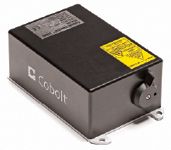
Raman spectral surface mapping software
S2M Raman spectral surface mapping software from CRAIC Technolgies is designed for use with the company's Apollo Raman microspectrometers. According to the company, the software allows users to map the Raman spectral variation of a sample with microscopic spatial resolution. CRAIC Technologies, San Dimas, CA;
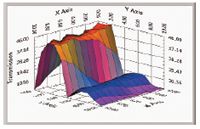
Voltage converter
EMCO's ultraminiature DC to HV DC converter is designed as a surface mount device that occupies <0.10 in.3 of space and has a profile of 0.128 in. above the host circuit board. According to the company, output voltages range from 100 V to 6 kV. EMCO High Voltage Corp., Sutter Creek, CA;
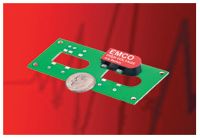
ICP valve accessory
The Niagara Plus ICP valve accessory from Glass Expansion is designed with a six-port valve that has a removable seventh port for automatic dilution or addition of internal standard. According to the company, a control module integrates all components. Glass Expansion, Pocasset, MA;
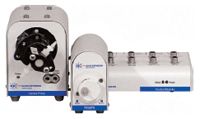
PAT microsite
A microsite from Hellma is designed to provide PAT users with comprehensive information on the topic. According to the company, site visitors can build a ready-to-order optical immersion probe with its on-line configurator. Hellma USA, Inc., Plainview, NY;
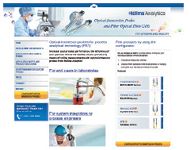
Benchtop fluorometer
The Dual-FL CCD-based benchtop fluorometer from Horiba Scientific includes a built-in UV–vis spectrophotometer. According to the company, the instrument has spectral rates of up to 80,000 nm/s and signal to noise greater than 20,000:1 RMS. Horiba Scientific, Edison, NJ;
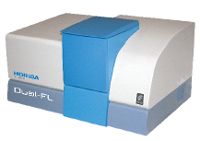
Glow discharge spectrometry application information
LECO's application snapshots for glow discharge-atomic emission spectrometry are available. According to the company, the snapshots describe the use of the company's GDS500A instrument for the analysis of titanium alloy, tin-based lead-free solder, and boron in low-alloy steel. LECO Corporation, St. Joseph, MI;
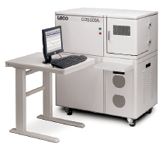
3D confocal Raman microscope
WITec's modular alpha300/500 Raman microscope is designed for analysis of the chemical characteristics of a sample three-dimensionally, underneath and at the surface. According to the company, the microscope provides high spectral quality and spatial resolution for minute sample structures. WITec, Knoxville, TN;
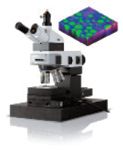
Inorganic materials database
The PDF-4+ 2012 database from ICDD provides material coverage for inorganic materials. According to the company, the database features 328,660 entries with digital patterns for use in total pattern analysis; 232,376 entries with I/Ic values for quantitative analysis by reference intensity ratio; and 217,142 entries that either have atomic coordinates or are cross-referenced to structures with atomic coordinates for quantitative analysis by the Rietveld method. International Centre for Diffraction Data, Newtown Square, PA;
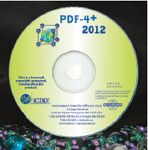
Card extraction LC–MS system
Agilent's AACE automated card extraction LC–MS system is an integrated instrument for the analysis of dried blood spots and other dried media. The system is based on the company's 6400 Series triple-quadrupole LC–MS system, and data processing is performed using the company's MassHunter software. According to the company, the system features a shorter overall cycle time from one injection to the next that is achieved by overlapping the extraction step and analytical cycle. Agilent Technologies, Santa Clara, CA;

ICP nebulizer
The C-Flow 700d concentric nebulizer from Savillex is designed to be a universal nebulizer for inductively coupled plasma–optical emission spectrometry and inductively coupled plasma–mass spectrometry. According to the company, the nebulizer is chemically inert and has an uptake line with a zero-dead-volume connection. Savillex, Eden Prairie, MN;
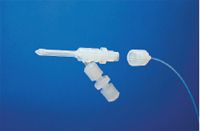
Digital multichannel analyzer
Amtek's MCA8000D compact digital multichannel analyzer is designed to digitize an input signal to measure the pulse height and obtain the pulse height spectrum. Free display and acquisition software and a free software development kit are included. Amptek Inc., Bedford, MA;
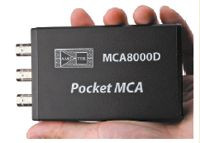
Mercury analyzer
The QuickTrace M-7600 mercury analyzer from CETAC Technologies is designed with TCP–IP communications that are preconfigured per laboratory preferences. According to the company, the analyzer is designed for ultratrace to sub-parts-per-million mercury quantitation and is capable of switching between low parts-per-million and parts-per-trillion analysis without hardware or tubing configuration changes. CETAC Technologies, Omaha, NE;
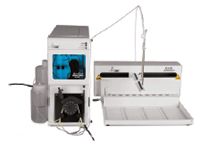
Raman spectrometer
The LabRAM HR Evolution spectrometer from Horiba Scientific is designed with an automated, extended wavelength range capability. According to the company, the product's wavelength range is from 200 nm to 2000 nm, with access to frequencies as low as 10 cm-1 . Horiba Scientific, Edison, NJ;
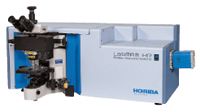
Cuvette holders
Mightex's cuvette holders are designed to accept a standard 10-mm pathlength cuvette for liquid or powder samples. According to the company, SMA-terminated optical fibers are used to couple light sources and spectrometers to the device, which is compatible with the company's fiber-coupled LED sources, spectrometers, and other light sources or spectrometers with SMA termination. Mightex, Pleasanton, CA;
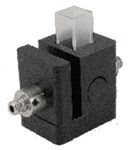
Filter systems
Ondax's SureBlock notch filters and XLF-series filters are designed to enable capture of Raman spectra in the terahertz spectroscopy regime (10–200 cm-1 , or 300 GHz to 6 THz) with any single stage spectrometer. According to the company, the filter systems also capture simultaneous Stokes and anti-Stokes Raman signals up to greater than 5000 cm-1 (150 THz) with throughput up to 80%. Ondax, Monrovia, CA;
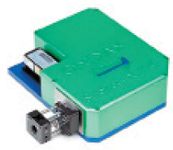
Microvolume UV spectrophotometer
Shimadzu's BioSpec-nano spectrophotometer is designed for fast, reproducible concentration determination of nucleic acids and proteins. The instrument reportedly requires a sample volume of 1 µL (0.2-mm pathlength) or 2 µL (0.7-mm pathlength), which is pipetted onto its measurement plate. No standard rectangular cell is needed, although a rectangular cell adapter is available. According to the company, sample mounting, measurement, and cleaning are performed automatically by the instrument, and measurement time is 3 s. Shimadzu Scientific Instruments, Columbia, MD;
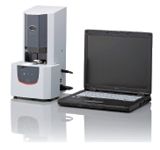
Data analysis software
The Unscrambler X software from CAMO Software is designed for analyzing spectroscopic data. According to the company, the software combines multivariate data analysis with data visualization, and is suitable for analyzing data from NIR, FT-IR, MS, Raman, NMR, UV–vis, X-ray diffraction, and other spectroscopic techniques. CAMO Software, Woodbridge, NJ;

Miniature spectrometer
The AvaSpec-Mini spectrometer from Avantes is designed to provide a resolution of up to 0.2 nm. According to the company, the device weighs 155 g and is equipped with an industry-standard SMA-905 connector. Avantes, Bloomfield, CO;
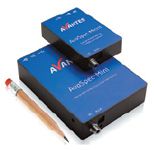
ICP-MS system
Thermo Fisher Scientific's iCAP Q ICP-MS system is designed to provide increased throughput to enable laboratories to cut analysis times by up to 50%. According to the company, the system features an interface that enables one-click setup and allows users to go from standby to performance-qualified analysis with the push of a button. Thermo Fisher Scientific, Inc., San Jose, CA;
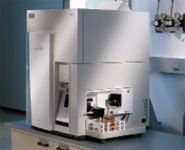
Raman filters
BragGrate Raman filters from OptiGrate are designed to enable standard Raman systems to upgrade for ultralow-frequency measurements. According to the company, Stokes and anti-Stokes Raman bands in the terahertz frequency range (5–200 cm-1 ) can be accessed with a single-stage spectrometer and a set of volume Bragg grating-based filters. OptiGrate, Oviedo, FL;
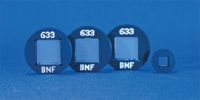
Silicon drift detector
EDAX's thermoelectrically cooled 50-mm2 silicon drift detector is designed for use in its Orbis micro-XRF elemental analyzer system for high-resolution spectral acquisition. According to the company, the system can be useful for those who make measurements on small fragments, coatings and deposits on thin substrates (such as ink on paper), biological samples, and trace element analysis using heavy filters to improve sensitivity. EDAX, Mahwah, NJ;
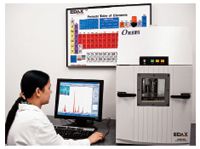
Photovoltaic measurement system
Newport Corporation's Oriel IQE-200 photovoltaic cell measurement system is designed for simultaneous measurement of the external and internal quantum efficiency of solar cells, detectors, and other photon-to-charge converting devices. The system reportedly splits the beam to allow for concurrent measurements. The system includes a light source, a monochromator, and related electronics and software. According to the company, the system can be used for the measurement of silicon-based cells, amorphous and mono/poly crystalline, thin-film cells, copper indium gallium diselenide, and cadmium telluride. Newport Corporation, Irvine, CA;
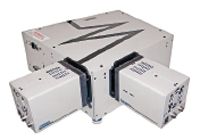
Hyperspectral imager
Bodkin Design & Engineering's VNIR-90 hyperspectral imager is designed with an optical processor and can be mounted on a moving platform, handheld, or used to capture transient events or moving objects. According to the company, the imager captures the full hyperspectral data cube in each video frame simultaneously.Bodkin Design & Engineering, LLC, Newton, MA;
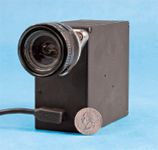
Raman microscope
Renishaw's inVia Raman microscope is designed with a 3D imaging capability that allows users to collect and display Raman data from within transparent materials. According to the company, the instrument's StreamLineHR feature collects data from a series of planes within materials, processes it, and displays it as 3D volume images representing quantities such as band intensity. Renishaw, Hoffman Estates, IL;
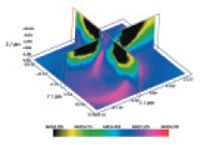
Nebulizers for ICP and ICP-MS
Plus series nebulizers from Meinhard are designed with low internal volume and A-type nozzles. According to the company, the TR+ (borosilicate glass), the TQ+ (quartz), and the SilQ (high purity quartz) nebulizers include gas and liquid fittings in high purity PFA with a variety of options, and natural aspiration is 500 µL/min for 1 L/min argon at 50 psi (340 kPa), with a useful range of 10–700 µL/min. Meinhard – Elemental Scientific, Golden, CO;

ICP-MS system
PerkinElmer's NexION 300 ICP-MS system is designed to provide the benefits of a collision cell and the detection limits of a true reaction cell. According to the company, the instrument can be run in three different modes: standard, collision, and reaction. A scanning quadrupole reportedly removes targeted interferences and reaction products in the universal cell. PerkinElmer, Waltham, MA;
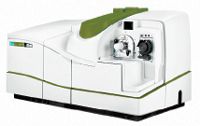
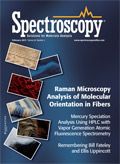
LIBS Illuminates the Hidden Health Risks of Indoor Welding and Soldering
April 23rd 2025A new dual-spectroscopy approach reveals real-time pollution threats in indoor workspaces. Chinese researchers have pioneered the use of laser-induced breakdown spectroscopy (LIBS) and aerosol mass spectrometry to uncover and monitor harmful heavy metal and dust emissions from soldering and welding in real-time. These complementary tools offer a fast, accurate means to evaluate air quality threats in industrial and indoor environments—where people spend most of their time.
NIR Spectroscopy Explored as Sustainable Approach to Detecting Bovine Mastitis
April 23rd 2025A new study published in Applied Food Research demonstrates that near-infrared spectroscopy (NIRS) can effectively detect subclinical bovine mastitis in milk, offering a fast, non-invasive method to guide targeted antibiotic treatment and support sustainable dairy practices.